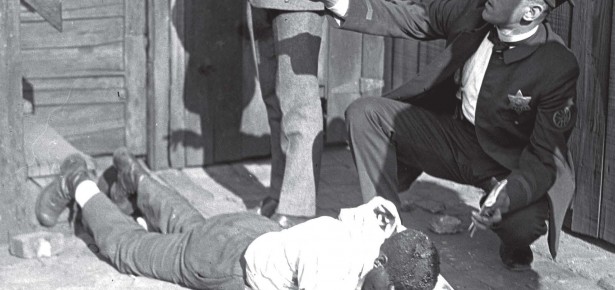
During the Red Summer of 1919, white mobs attacked African Americans in six cities, deadly episodes of collective violence that often lasted for days. Chicago’s riot, one of the worst, lasted a week and claimed the lives of 38 men (23 black, 15 white). The mobs, in Chicago and the other cities (Charleston, S.C.; Bisbee, Ariz.; Longview, Texas; Washington, D.C.; and Knoxville, Tenn.), sought to drive African Americans from industrial jobs or from majority white neighborhoods; to punish blacks for their prosperity; and to “protect” white women against the alleged assaults of black men.
Why, then, were African Americans blamed for the Red Summer? During Chicago’s riot, for example, a local newspaper printed a false report that “a group of twelve discharged negro soldiers, all armed, terrorized small groups of whites in various parts of the south side this afternoon.” In fact, these men had tried to protect black residents because the city’s police were unable to halt white mob attacks. This wasn’t just a problem in Chicago. During all six riots of the Red Summer, local authorities failed to restore law and order. In some instances police abetted the violence by protecting white rioters or joining in the attacks. Denied protection of the law, African Americans took up arms to defend themselves. Especially in Chicago and Washington, newly returned black veterans of World War I organized and carried out this armed resistance. Calling themselves New Negroes, these veterans and other African Americans fought to stop the violence and to demand—and receive—long denied constitutional rights. Many white observers unjustly blamed the summer’s violence on blacks’ armed resistance.
In the following excerpt from my book 1919, The Year of Racial Violence: How African Americans Fought Back, I explain how key federal agencies, particularly the Military Intelligence Division and the Bureau of Investigation (forerunner of the FBI), reacted to the Red Summer. Intelligence officers, certain that socialists and communists were urging African Americans to take up arms, mistakenly believed that a revolution was imminent, that blacks across the country were conspiring to attack whites. In their eyes, the Red Summer was a Red Scare. Ignoring the indisputable evidence that white mobs were initiating the violence, the Military Intelligence Division and the Bureau of Investigation began working with local authorities and gun dealers across the country to block the sale of weapons to African Americans. Just as the New Negroes fought back against white mobs, they resisted this national campaign to disarm them.
Download an excerpt from 1919 here.
Latest Comments
Have your say!